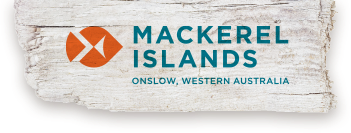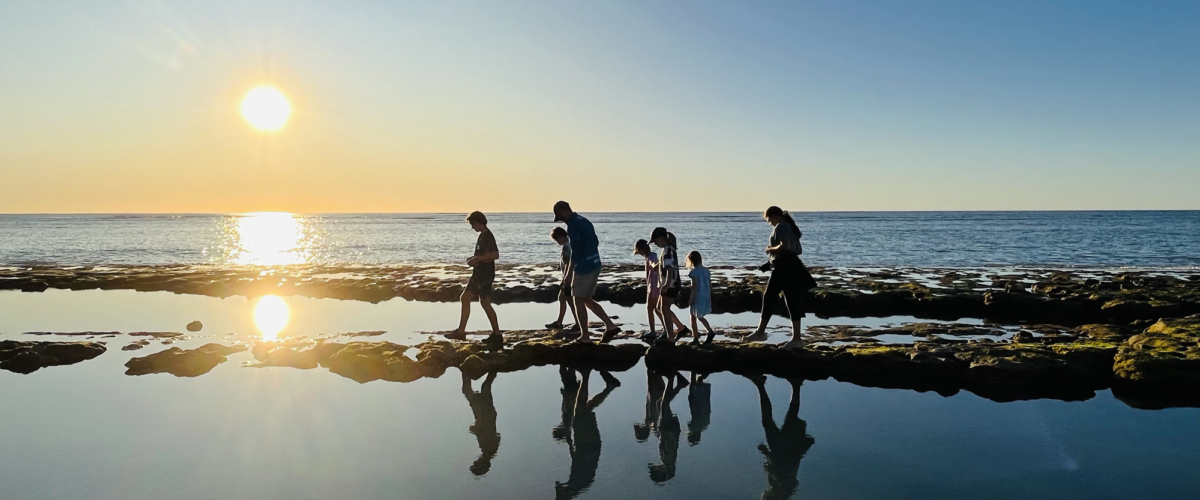Mackerel Islands Wildlife & Ecotourism
The Mackerel Islands are a gazetted nature reserve brimming with resident wildlife. Explore the island, ocean and coral reefs on a self-guided or organised tour. Discover the amazing marine life teeming underwater and learn about our sea turtles. On land, immerse yourself in nature, encounter the island wildlife, see a famous Pilbara sunset and watch an incredible canopy of stars come out each night.
The ever-changing nature of the shore reveals shells and rock formations during a walk along the beautiful natural beaches. A colourful variety of sea life is to be discovered in these tropical waters and the islands are home to many bird species.
Eco Walk Trail
For the energetic and adventurous, the Thevenard Island Eco Walk Trail is for you. It takes you around the 12km circumference of the island with 12 stops of interest, to spot all kinds of wildlife and marine life, seashells, urchins and beach treasures.
There are 12 markers on the Island Eco Trail:
1. Ghost Crab Beach
2. Coral Gardens
3. Swimming Shallows
4. Turtle Dunes
5. Turtle Highway
6. Sandy Cay Lookout
7. Crayfish Corner (& nearby Osprey Nest)
8. Pristine Point
9. Raptors Rest
10. Seabird Stretch
11. School Shark Shallows
12. Stingray Beach
The walk takes about 3-4 hours and a reasonable level of fitness is recommended.
Sea Turtles
Flatback, hawksbill, loggerhead and green turtles abound at the island's renowned "turtle highway", making the Mackerel Islands an absolute turtle hot spot all year-round. You may be able to snorkel with a sea turtle, or see them from your kayak, SUP board or boat.
The turtle breeding season occurs from around September to April. There are 3 phases beginning with the mating period, where you'll spot turtles in the shallows during September to November. From December, the nesting period starts, and the females come onshore to dig their nests in the beach dunes and lay eggs in the sand. After this is the hatching period. The eggs take around 50-70 days to incubate, with the baby turtles digging to the surface and scurrying to the ocean, guided by moonlight, until around March/April. We encourage guests to experience this magical time and protect the turtles by adhering to the Turtle Watcher's Code of Conduct.
As a significant nesting site to the vulnerable Flatback Turtles - the only marine turtle species that nest exclusively in Australia - the Mackerel Islands are part of a Conservation Program run by the DBCA (Department of Biodiversity, Conservation & Attractions).
Dolphins
Several species of dolphins reside in the waters surrounding the Mackerel Islands, including the bottlenose, spinner, striped, common and humpback dolphins. It's rare to have a day out on the water without seeing these friendly dolphins up close, bow riding and playing.
Whales
Whales that have been observed in the area include the pilot whale, false killer whale, sei whale, bryde’s whale and humpback whales.Each winter, humpback whales leave Antarctica to migrate northwards to warmer waters along the coast of Australia to breed and calve, before heading back to their feeding grounds in the polar waters of the Antarctic. The Mackerel Islands are visited by hundreds of whales during their migration and calving season, July to August every year.It is common for island guests to have continuous whale sightings and view awe-inspiring whale behaviour like blowing, breaching and tail slapping.
Dugongs (Sea Cows)
Dugongs are also found in the waters around the islands and can be observed feeding on sea grass and calving in waters less than 5 metres deep. Dugong breeding occurs between September and April. Sightings are often reported by people using small boats in the shallow waters within 1km of the islands.
Birds
Home to many different bird breeds, Thevenard Island has recorded 24 species of land birds. In addition, there are up to 31 species of migratory birds occurring in the Mackerel Islands area, including kestrels, quails, godwits, plovers, sandpipers and harriers. Some birds migrate from remote northern hemisphere locations as far as Siberia, and are protected by international treaties. Seabirds, such as terns and shearwaters, nest from October to January.
Mammals & Reptiles
The only native land mammal on the island is the forrest mouse. The domestic mouse also inhabits the island and is most likely to have been introduced. A total of 9 reptile species have been recorded on the island including goannas, dragons, skinks, geckos and our friendly little ta-ta lizards. No snakes or rare or endangered reptiles have been recorded.
Our Commitment to Sustainable Ecotourism Development
Mackerel Islands has had state-of-the-art facilities installed to support sustainable ecotourism in recent years, including a solar farm and desalination plant. The reverse osmosis desalination plant produces up to 70,000L of crystal clear water per day and runs entirely from the power of the sun.
The solar farm was one of the first using this technology at this scale, comprising:
- 1200 solar panels delivering 325 KVA of power
- 650 KW hours of Lithium Ion battery storage
- 4 x 110 KVA generator backups
The Mackerel Islands remains steadfast in its commitment to future sustainable solutions while developing tourism in the region.


